What Is SaaS Customer Support? Definition, Benefits and Best Practices
SaaS (Software as a Service) is a business model where customers access software applications over the Internet without installing or maintaining them on their own devices. SaaS customer support provides assistance and guidance to SaaS users, from onboarding to retention. This article will explore the definitions, benefits, and best practices of SaaS customer support and how it can help you grow your SaaS business and delight your customers.
What Is SaaS Customer Support
SaaS customer support is the process by which organizations provide SaaS users with help and guidance from onboarding to retention. It runs through the product from pre-sales to post-sales, answering questions and troubleshooting. SaaS customer support differs from regular customer support in several ways, such as the need to handle recurring billing, subscription management, and cloud security issues. SaaS customer support also requires a proactive and customer-centric approach, as SaaS users expect fast, reliable, and personalized service.
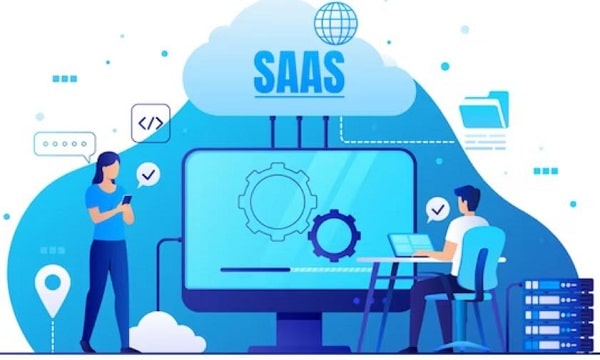
3 Levels of SaaS Customer Support
SaaS customer support can be divided into three levels, depending on the complexity and urgency of the user's issue:
Level 1: Basic support includes answering FAQs, troubleshooting common problems, and providing product information.
Level 2: Technical support, such as resolving software bugs, integrating with third-party applications, and configuring advanced features.
Level 3: Strategic support, such as offering best practices, optimizing user experience, and increasing user engagement.
7 Models of SaaS Customer Support
SaaS customer support can also be delivered through different models, depending on the resources and preferences of the SaaS provider and the user. Here are seven common models of SaaS customer support:
Self-Service Model: The user can find the solution to their issue by accessing online resources, such as knowledge bases, forums, videos, and chatbots.
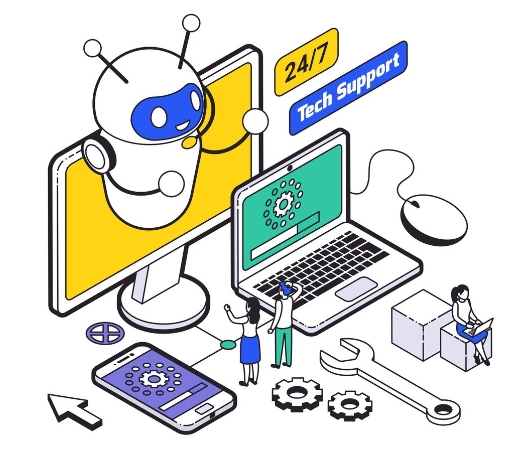
1-on-1 Support Model: The user can contact a dedicated support agent via email, phone, or live chat and receive personalized and timely assistance.
Digital Support Model: Users can receive automated and scalable support via email, SMS, or push notifications, such as reminders, tips, feedback requests, and satisfaction surveys.
Tiered Support Model: In this model, users can access different levels of support depending on their subscription plan, issue severity, or user profile.
Redirected Service Model: The user can be redirected to a third-party service provider, such as a partner, reseller, or consultant, who can offer specialized or localized support.
One-Team Support Model: In this model, users can interact with any member of the SaaS provider's team, such as developers, marketers, or product managers, who can share their expertise and insights.
Collaborative Customer Support Model: The user can collaborate with other users, such as peers, mentors, or community leaders, who can offer advice, feedback, or testimonials.
Key Components of a SaaS Customer Support Strategy
A SaaS customer support strategy is a plan that outlines how you will deliver high-quality service to your SaaS users and how you will measure and improve your performance. A SaaS customer support strategy should include the following key components:
Clear Customer Service Philosophy
This is the vision and mission of your SaaS customer support and the values and principles that guide your actions and decisions. A clear customer service philosophy helps you align your goals with your users' needs and expectations and communicate your brand identity and personality.
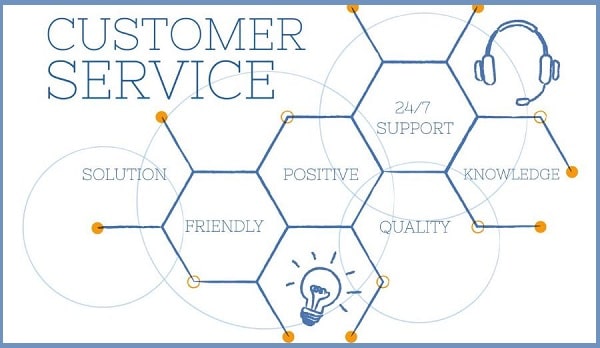
Proper Customer Service Tools
These software applications and platforms enable you to provide effective and efficient SaaS customer support, such as helpdesk, CRM, chatbot, analytics, and feedback tools. Proper customer service tools help you automate, streamline, and optimize your workflows and processes and enhance your user experience and satisfaction.
Excellent Support Team
This group delivers SaaS customer support, such as support agents, managers, and specialists. An excellent support team should have the skills, knowledge, and attitude to handle various user issues and scenarios and to provide friendly, professional, and empathetic service.
Efficient Ticket Management System
This system allows you to track, organize, and resolve user requests, issues, and feedback, such as tickets, cases, or incidents. An efficient ticket management system helps you prioritize, assign, and escalate tickets and monitor and measure your response time, resolution time, and customer satisfaction.
Simplified Ticket Routing Process
This process determines how tickets are distributed and handled among your support team members, such as by issue type, user segment, or availability. A simplified ticket routing process helps you ensure that tickets are routed to the most suitable and qualified support agent and that tickets are resolved promptly and consistently.

Diversified Customer Contact Channels
These are the different ways that users can reach out to you and receive SaaS customer support, such as email, phone, live chat, social media, or in-app messaging. Diversified customer contact channels help you cater to users' preferences and convenience and increase accessibility and reachability.
Why SaaS Customer Support Is Important for Businesses
SaaS customer support is not only a way to solve user problems but also a way to create value for your business. Here are some of the benefits of providing exceptional SaaS customer support:
Reduce Customer Churn
Customer churn is the rate at which customers stop using your product or service. SaaS customer support can help you reduce customer churn by addressing user issues, preventing frustration, and increasing satisfaction.
Increase Customer Loyalty
Customer loyalty is the degree to which customers are committed to your brand and willing to repeat purchases. SaaS customer support can help you increase customer loyalty by building trust, rapport, and emotional connection with your users.
Boost Customer Advocacy
Customer advocacy is the act of customers promoting your brand to others through word-of-mouth, referrals, or reviews. SaaS customer support can help you boost customer advocacy by exceeding user expectations, delivering wow moments, and soliciting feedback.

Grow Customer Lifetime Value
Customer lifetime value (CLV) is the total revenue a customer generates for your business over their entire relationship. SaaS customer support can help you grow customer lifetime value by increasing retention, loyalty, advocacy, and upselling or cross-selling opportunities.
Gain Customer Insights
Customer insights are the data and information that reveal your customers' needs, wants, preferences, and behaviors. SaaS customer support can help you gain customer insights by collecting feedback, analyzing data, and identifying patterns and trends. Customer insights can help you improve your product, service, marketing, and sales strategies and create a better user experience.
Best Practices: How to Improve SaaS Customer Support
SaaS customer support solves problems, creates customer value, and builds long-term relationships. You must follow some best practices to enhance customer support quality and efficiency to achieve this. Here are some of them:
Choose Multi-Channel Support Tools
Customers have different preferences and expectations when it comes to contacting support. Some prefer phone calls, some prefer to chat or email, and some want to use self-service options. To cater to these diverse needs, you must choose multi-channel support tools that provide consistent and seamless support across various platforms and devices. Some of the types of SaaS customer support software are:
1Technical Support Software
Technical support software allows you to remotely access and control your customers' devices, troubleshoot issues, and provide guidance. This can save time and resources and improve customer satisfaction and loyalty. One example of technical support software is AirDroid Remote Support, which offers real-time screen sharing, voice calls, AR cameras, tutorial gesture, and more.
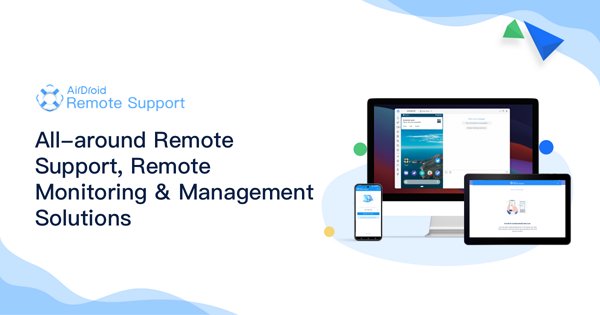
AirDroid Remote Support is a powerful and efficient solution for remote support and lightweight management of mobile and commercial-grade devices. It lets you provide remote assistance to your customers or employees intuitively and securely using various tools and features.
2Conversational Support Software
Conversational support software lets you communicate with your customers through natural language, chatbots, voice assistants, or messaging apps. This can provide instant and personalized support and collect feedback and insights. Conversational support software can also integrate with tools like CRM, analytics, or knowledge base to enhance the support experience.
3Helpdesk Software
Helpdesk software is a centralized platform that allows you to manage and track customer support requests from different channels and sources. It helps you organize, prioritize, assign, and resolve tickets and monitor performance and metrics. Helpdesk software can also automate workflows, notifications, and responses to improve efficiency and productivity.

4Live Chat Software
Live chat software lets you interact with your customers in real-time through a chat widget on your website or app. It helps you provide fast and convenient support and increase conversions and retention. Live chat software can also offer features such as co-browsing, video chat, screen sharing, or chatbots to enhance the support quality and engagement.
5Customer Self-Service Software
Customer self-service software allows customers to find answers and solutions independently without contacting support. It includes tools such as FAQs, knowledge base, forums, or tutorials that can provide relevant and updated information. Customer self-service software can help you reduce support costs, improve customer satisfaction, and empower your customers.
Provide Proactive Customer Support
Proactive customer support means anticipating and addressing your customer's needs and issues before they become problems or complaints. It involves reaching out to your customers, offering help, advice, or suggestions, and preventing potential errors or failures. Proactive customer support can help you improve customer loyalty, retention, and advocacy and reduce churn and negative feedback.

Some of the ways to provide proactive customer support are:
- Monitor your customers' behavior and usage, and identify patterns, trends, or anomalies.
- Send timely and relevant notifications, alerts, or reminders to inform your customers about updates, changes, or issues.
- Provide tips, tricks, or best practices to help your customers get the most out of your product or service.
- Ask for feedback, ratings, or reviews to measure customer satisfaction and expectations.
- Follow up with your customers to thank them, appreciate them, or offer additional support.
Collect and Listen to Customer Feedback
Customer feedback is essential for understanding your customers' needs, preferences, and opinions and improving your product or service. It helps you identify your strengths, weaknesses, opportunities, and threats. It also enables you to build trust and rapport with your customers and show them that you care and value their input.
Some of the ways to collect and listen to customer feedback are:
- Use surveys, polls, or questionnaires to gather quantitative and qualitative data from your customers.
- Use social media, forums, or blogs to monitor and engage with your customers' comments, posts, or reviews.
- Use analytics, metrics, or reports to measure and track your customers' behavior, actions, or outcomes.
- Use feedback management tools to organize, analyze, and act on your customers' feedback.
- Use feedback loops to close the gap between feedback and action and communicate the results to your customers.
Perform Tedious Tasks in Automated Manner
Automation can help you streamline and optimize your customer support processes by reducing human errors, increasing speed and accuracy, and freeing time and resources. It can also help you enhance customer support quality and consistency by providing standardized and personalized responses and ensuring compliance and security.

Some of the tasks that can be performed in an automated manner are:
- Routing and assigning tickets based on priority, urgency, or skill criteria.
- Sending automated responses, acknowledgments, or confirmations to acknowledge or resolve common or straightforward requests.
- Escalating or transferring tickets based on complexity, difficulty, or availability.
- Generating and sending reports, invoices, or receipts to provide documentation or evidence.
- Scheduling and sending follow-ups, reminders, or notifications to keep your customers informed or engaged.
Monitor Support Progress in Real Time
Monitoring support progress in real time can help you measure and improve customer support performance, efficiency, and effectiveness. It can also help you identify and resolve issues, bottlenecks, or gaps and optimize and adjust your strategies, policies, or resources.
Some of the ways to monitor support progress in real time are:
- Use dashboards, charts, or graphs to visualize and display your customer support data and metrics, such as response time, resolution time, customer satisfaction, or ticket volume.
- Use alerts, notifications, or alarms to notify you or your team about critical or urgent situations, such as SLA breaches, high-priority tickets, or negative feedback.
- Use live chat, video call, or screen sharing to communicate and collaborate with your team or customers and provide or receive instant support.
- Use feedback, ratings, or reviews to collect and evaluate your customers' opinions and experiences and identify areas of improvement or excellence.
Building the Knowledge Base
A knowledge base is a repository of information and resources to help your customers and team find answers and solutions to their questions and problems. It can include articles, guides, manuals, FAQs, videos, or images that provide relevant and updated information. A knowledge base can help you improve customer support quality and efficiency by reducing support requests, increasing self-service, and enhancing customer education and empowerment.
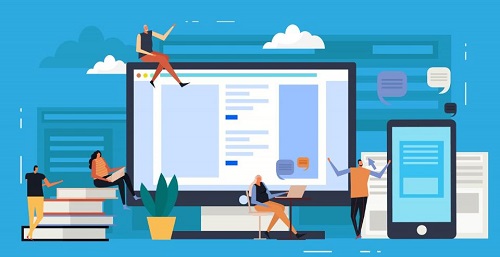
Some of the steps to building a knowledge base are:
- Identify your customers' and your team's needs, challenges, and goals, and determine the scope and structure of your knowledge base.
- Create and organize your content using clear, concise language, a simple, consistent format, and helpful and engaging media.
- Publish and promote your content using social media or email, and make it accessible and visible to your customers and your team.
- Update and maintain your content using feedback, analytics, or testing, and ensure its accuracy, relevance, and quality.
Cultivate Excellent Professional Team
Your customer support team is the face and voice of your company and the key to your customer satisfaction and loyalty. Therefore, you need to cultivate an excellent professional team that can provide exceptional customer support and represent your company's values and culture. To do this, you need to:
- Hire and train your team using clear and specific criteria, such as skills, knowledge, attitude, or personality, and provide them with adequate and continuous training, coaching, or mentoring.
- Motivate and reward your team using incentives, recognition, or appreciation, and provide them with feedback, guidance, or support.
- Empower and trust your team using autonomy, flexibility, or responsibility, and provide them with tools, resources, or authority.
- Communicate and collaborate with your team using regular and transparent communication, teamwork, or collaboration, and provide them with a clear and shared vision, mission, or goal.
Create a Strong Link between Support and Products
Customer support and product development are interrelated and interdependent functions that can influence and benefit each other. By creating a strong link between support and products, you can improve your customer support quality and efficiency, as well as your product innovation and improvement. To do this, you need to:
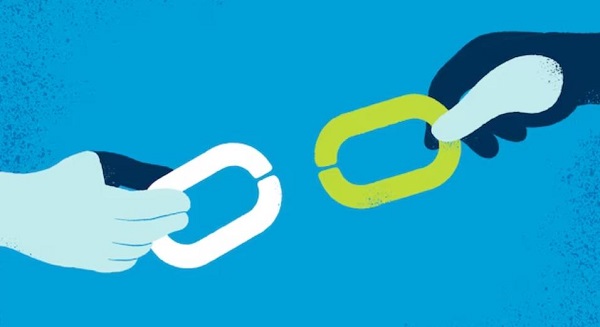
- Share and exchange information, data, or feedback between your support and product teams. Use them to identify and understand your customers' needs, preferences, expectations, and your product's strengths, weaknesses, opportunities, and threats.
- Align and coordinate your strategies, plans, or actions between your support and product teams, and use them to design and deliver your product or service according to your customers' requirements, specifications, or satisfaction.
- Collaborate with your support and product teams and use them to test and validate your product or service and ensure its quality, functionality, or usability.
Conclusion
SaaS customer support is crucial, guiding users from onboarding to retention with a proactive approach. It spans three levels, from basic assistance to strategic guidance, and can be delivered through various models, including self-service and collaboration. A successful strategy involves a clear philosophy, proper tools, an excellent support team, efficient ticket management, simplified work order routing, and diversified contact channels.
Its importance lies in reducing churn, fostering loyalty, promoting advocacy, increasing customer lifetime value, and gaining valuable insights. Implementing best practices, like proactive support and feedback collection, enhances efficiency while cultivating an excellent team and linking support with product development, ensuring sustained success.






Leave a Reply.